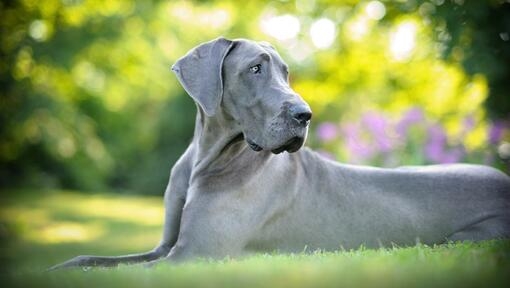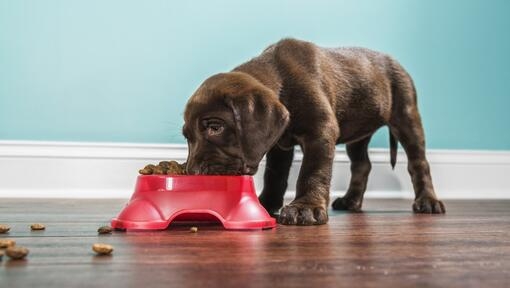Different size dog breeds tend to grow at different rates, so if your puppy is a toy breed, such as a Miniature Poodle, you may find that they are not too far from their adult size at six months old.
In contrast, if you have a giant dog breed such as a Great Dane, they will carry on growing for much longer, potentially up until the age of 2. Medium dog breeds and large breeds will fall somewhere between these two timelines and reach their adult height somewhere between nine months and a year. When dogs stop growing is a question asked by many, and there are no one-size-fits-all answers, but this article will walk you through what to expect with your pup!

How long to dogs grow for?
Depending on breed or type, dogs can keep growing for anywhere up to 24 months old, with larger breeds tending to reach maturity later than smaller dogs.
Your dog’s skeletal growth is what determines how tall it will become as an adult. The long bones in a puppy’s leg grow from distinct places, which are called growth plates. The growth plates are somewhat flexible and soft during puppyhood when new tissue is being formed. As the puppy grows, the new tissue hardens into bone. When the growth plates have stopped producing new tissue, they are said to have ‘closed’, which means that they have stopped growing and the bone has reached its final size.
When do dogs stop growing?
Your dog should stop growing when they reach maturity, which occurs between 6 and 24 months of age, depending on breed size.
Your dog should stop growing when they reach maturity, which occurs between 6 and 24 months of age, depending on breed size.
Small and medium dog breeds
Small dog breeds typically start to grow rapidly, in fact, toy-breed puppies finish growing at around half the age of larger puppy breeds. Small breed puppies tend to stop growing between 6 and 12 months.
Medium-breed puppies might take just a bit longer to grow, reaching their adult size at around 12 months.

Large and giant dog breeds
Larger dog breeds do take a bit more time to reach full adult size, compared to their smaller counterparts. This is because the bigger bones need more time to form and grow.
Large to giant breed pups usually stop growing between 12 and 24 months, and can weigh 30-40kg or more as a fully grown adult.
What to consider when your dog is growing?
There are a few things to consider apart from when dogs stop growing, especially if you have a fast-growing small breed. The important thing to remember is that they are an adolescent for less time, which means training your puppy needs to be picked up more quickly. Also, make sure your four-legged friend is socialised well with other dogs as soon as they are able to go outside and that you are firm and consistent with any unwanted behaviour. Remember to make sure that your puppy’s vaccinations are up to date before allowing your puppy out and about.
If you have a breed that is a slow-growing breed, this means that they will be a bit more hands-on for a little longer. If you are wanting to get a larger breed, you need to be prepared and patient, as it might take up to 24 months for them to be fully grown. Many people will be surprised how a giant dog can still be and behave like a puppy, despite being a considerable size!
How to exercise a growing puppy safely
Puppies are little balls of energy, regardless of what size breed they are. They all need to be exercised and stay healthy, but too much exercise isn’t good for your puppies. Excessive or prolonged activity can be detrimental to bones and joint development. This is why we don’t recommend running on roads or jogging with a dog less than 14 to 18 months of age. This is especially crucial in large and giant breeds until the growth plates have fully fused.
Instead, walk in shorter bursts on softer surfaces like grass or sand until your dog has finished growing to ensure they don’t encounter any issues during its growth period.

How to feed a growing puppy
Foods that meet the nutritional guidelines and are specifically designed for this growing stage will provide your developing pup with all the nutrition they need.
Always make sure you follow the guidelines on the puppy food when feeding your furry friend so that your furry friend doesn’t become overweight, which can load unnecessary weight onto their growing bones.
Obesity in puppies can lead to a future of orthopaedic issues later in life, such as hip dysplasia and arthritis. Ways to ensure that your pup is neither under nor overweight is to regularly check their body to make sure of the following:
- Ribs are not visible but can still be felt
- There is an abdominal tuck
- A waist is defined and visible
Having a new dog can be both a stressful and exciting time for owners and pup. Whether they grow fast or slow, all pups need to be kept healthy and exercised in a safe way. Several factors can influence the length of time during which your pup will continue to grow.





